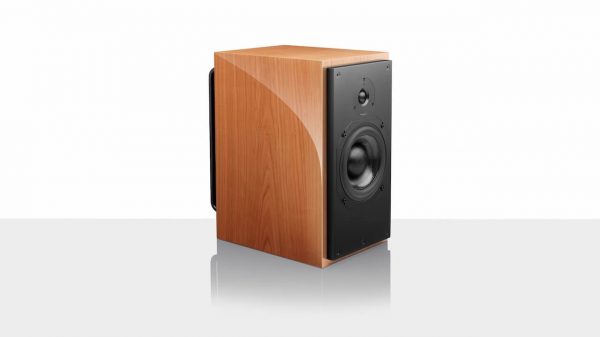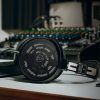While large flat panel TVs have dropped in price lately, they still max out at around 100 inches. And the good ones are typically still pretty expensive. If you’re aiming for something more cinematic, like maybe 120 or even 150 inches, then you’re going to want to consider a projector. And if you want a simple set-up to go with that huge screen, you’ll probably want to look at UST (Ultra Short Throw) projectors.
Unlike standard “long throw” projectors which need to be 6 to 12 feet or more from the screen and may require very specific mounting locations, UST projectors are designed to sit right up next to the wall and can be placed on a standard TV stand or console. This makes placement and set-up simpler and more convenient. Also, if you project your movies and TV shows directly on a wall or on a motorized screen, then you can make your “TV” truly disappear when it’s not in use. And some folks who are design conscious really like the idea of a disappearing TV.

The UST Projector market includes some brands you may have heard of, like Hisense, Samsung and Epson, and others you might not have, like Formovie, XGIMI and Nexigo. For the third straight year, Projector Dealer ProjectionScreen.com has brought together the top UST projectors available today into one big room so a bunch of audio/video nerds like yours truly could test them with a wide variety of test patterns, still images and movies clips and figure out which of these contenders is best in its class.
The event is called the UST Projector Showdown. This year’s Showdown was held at ProjectorScreen.com’s headquarters in Pompton Lakes, NJ on November 16, 2024 and I was lucky enough to be one of the judges. The organizer and emcee of this year’s event was Phil Jones, owner and reviewer at ProjectorReviews.com. He picked the final list of contenders while ProjectorScreen.com owner Brian Gluck provided the actual projectors from his own inventory. He also gave us a nice big room to play in with space for all eight of these UST projectors to be viewed at the same time.

Judges for this year’s event include ISF-trained calibrators, technology journalists, reviewers, YouTubers and respected consumer electronics influencers.
Judges for the 2024 UST Projector Showdown:
- Chris Boylan – ISF trained calibrator, reviewer and tech journalist. Founder of Big Picture Big Sound and Editor-at-Large for eCoustics
- Channa De Silva – Home Theater YouTuber, DJ and Dolby Atmos mixer @TechnoDad on YouTube
- Andy Grimm – Projector reviewer and contributor to Home Theater Review and Sound and Vision magazine, display calibrator
- Chris Majestic – YouTube projector reviewer and influencer, @ChrisMajestic on YouTube
- Milton Santiago – YouTube content creator and A/V reviewer at EBPMAN Tech Reviews, @ebpman on YouTube
- Kam Valentine – ISF-certified projector calibrator and reviewer with ProjectorReviews.com.
As in previous UST Showdowns, a targeted selection of content was used in order to highlight specific areas of picture quality including contrast, color accuracy, bright and dark room performance, motion handling, detail, image uniformity, HDR tone mapping and peak brightness. While most displays can look pretty good when showing super high quality 4K/HDR content, we looked at lower quality HD and SDR (standard dynamic range) content as well to see how each UST projector handled cleaning up those feeds and upconverting them to its native resolution.
Competitors in the 2024 UST Projector Showdown
- Hisense PX3 Pro Triple Laser DLP Projector ($3,499)
- Hisense PL2 Single Laser DLP Projector ($2,499)
- Formovie Cinema Edge Single Laser DLP Projector ($1,999)
- Formovie Theater Premium Triple Laser DLP Projector ($2,999)
- Epson LS800 Single Laser LCD Projector ($3,499)
- Nexigo Aurora Pro Triple Laser DLP Projector ($2,999)
- XGIMI Aura 2 Hybrid Laser/LED light source DLP Projector ($2,699)
- Samsung The Premier 9 (SP-LSP9T) Triple Laser DLP Projector ($6,499)
Prices noted are MSRP (Manufacturer’s Suggested Retail Price). Actual selling prices may vary. Check current pricing by clicking the links to ProjectorScreen.com. Note: eCoustics is a ProjectorScreen.com affiliate and may earn a commission if products are purchased through links on our site.
Lasers, Lasers, Everywhere
UST Projectors are sometimes called “Laser TVs” because they use laser light sources, they include built-in speakers and usually have on-board streaming capabilities as well. So, unlike a traditional projector which may not have a built-in speaker or streaming platform, UST projectors can be one-piece all-in-1 replacements for a standard television.
Seven of the eight projectors use DLP (Digital Light Processing) imaging, while the Epson LS800 uses a triple-chip LCD design. All of the projectors featured a laser light source for extended maintenance-free life of 20,000 hours or more. The Hisense PX3 Pro, Formovie Theater Premium, Nexigo Aurora Pro and Samsung The Premier 9 all use triple-laser lighting, one laser for each primary color. The Hisense PL2, Formovie Cinema Edge and Epson LS800 use a single laser+phosphor while the XGIMI Aura 2 uses a hybrid laser/LED light source.
All of the projectors in the competition use a technique called “pixel shifting” to squeeze more visible detail out of their DLP or LCD chips. Six of the projectors in this year’s Showdown use a 1080p DLP chip shifted four times for 4K resolution. The Samsung Premier 9 uses a higher resolution, larger DLP chip which only requires dual pixel shifting to attain 4K resolution. The Epson LS800 also uses dual pixel shifting to produce a resolution that is twice as detailed as 1080p HD (but half as detailed as True 4K).

A Few Words about HDR Tone Mapping
If you’ve ever read or watched a review of a modern TV or projector, you probably already know about something called “HDR tone mapping.” The is the ability for a TV or projector to take content like a movie or TV show that was mastered for a display with a peak brightness of (say) 4,000 nits and “map” this brightness range to the TV or projector’s own native brightness and color capabilities. While some modern LED/LCD displays can hit 4,000 nits of peak brightness (and some even higher), a projector typically can’t exceed 250 nits of peak brightness. So that whole range of 0 to 4,000 nits or even 0 to 10,000 nits in the movie or TV show needs to be translated to 0 to 250 nits (for example) in a way that still looks realistic and maintains both the bright and dark details in the image.
If a display does great HDR tone mapping, then you should still be able to see the shadow details in a dark alley or room as well as the bright details or specular highlights visible in a sunset, a bright sky or snowy landscape. If a display does not do HDR tone mapping well, then the darker areas or the brighter areas (or both) can be “crushed” losing detail that was meant to be visible. An otherwise great projector can fall apart on high dynamic range content if it doesn’t get HDR tone-mapping right, and we did see evidence of this in the UST Showdown (more on that later).
So Many Settings, So Little Time
When doing a competition like this, it’s always a challenge of how to set the video settings on each projector so each is seen in their best light. Of course, power saving “eco” modes are always disabled as these can lead to a dull picture at the savings of a few pennies in electricity. But should each projector undergo a full professional calibration, even if customers are not likely to pay for such a service? Or should each display be put into one of its preset modes so it’s a closer match to what an actual customer would see? In this case, the event organizers chose to ask the manufacturers themselves for advice on what settings to use on each projector in order to make them most accurate and best represent their peak performance.

Some, but not all, manufacturers were happy to share their recommendations, with the notable exception of Samsung who offered no specific advice of which picture mode and settings to use for the competition. The event organizers said they would post the exact settings used for each projector so, if you want the details, check out ProjectorScreen.com web site in their 2024 UST Showdown event coverage.
Gentlemen, Start Your Projectors
Sources for the 2024 Showdown included a Kaleidescape Strato V movie player loaded with both 4K and 1080p HD movies and clips and a Panasonic UHD Blu-ray Player. A matrix HDMI switch from AVPro delivered an identical video signal to each projector with identical HDMI cables of the same length used for each display. 100-inch reference ALR (Ambient Light Rejecting) screens from Spectra Projection were used with each projector.

Over the course of approximately eight hours, we examined each projector with a series of video clips and stills each chosen to highlight specific areas of video performance. We rated each UST projector from 1 to 10 on a variety of factors, with a separate section for SDR (Standard Dynamic Range) as we’d see on most live broadcasts and standard Blu-Ray Discs and for HDR (High Dynamic Range) as we’d see on UHD Blu-ray Discs, Kaleidescape and premium streaming services. Also, at the end of the testing, each judge was asked to list their top three favorites for SDR content, HDR content and overall. This would be used to pick an overall winner, even if the compositive scores for each projector differed from the judges’ overall picks.

Viewing Impressions
A few things stood out pretty quickly to me, both good and bad. The Epson LS800’s detail resolution couldn’t compete with the rest of the projectors when looking at native 4K content with fine detail such as newspaper print or text signage on buildings. The Epson LS800 is only capable of reproducing half the detail in a 4K video signal so it’s unsurprising that it looked less sharp on highly detailed 4K images. This kind of thing is less likely to be noticed on actual 4K and 1080p HD video content that most consumers will be watching most of the time.
Also, with the Epson set to “Cinema” mode and the Samsung projector set to “Filmmaker” mode, they produced a fairly dim image, compared to the other projectors in the competition. We do have to keep in mind that Cinema mode is what Epson recommended, and Samsung opted not to make any specific suggestions. And in most cases, “Cinema” or “Filmmaker” modes are the most accurate of any presets. But with any ambient light (and no ambient light sensor enabled), these modes can look a bit washed out on a projector.

After the formal competition had completed, we did put both the Epson and the Samsung projectors in “Dynamic” mode and this livened up the images on both projectors a great deal. Dynamic mode isn’t usually the most accurate as far as color accuracy goes but with even a bit of ambient light in the room, owners are likely to want to experiment with the various picture modes or even invest in a professional calibration to create custom settings both for bright rooms and for dark rooms.
The Formovie Theater Premium, whose predecessor the Formovie Theater dominated the past two years’ Showdowns, did produce bright, punchy, detailed and saturated images. But on SDR (standard dynamic range) content, the colors were less accurate than most of the competitive models. This was particularly noticeable with rich reds and greens which both appeared a bit blown out on the Formovie Theater Premium. On 4K/HDR content, this punchy image gave the Formovie an edge over many of the competitors as the extended color gamut of HDR content was more accurately reproduced on the Formovie. Also, even knowing the colors in SDR mode were less accurate, some of the judges still preferred the image on the Formovie Theater Premium. Channa (YouTube’s TechnoDad) said he thought his mom would love it.

As the emcee Phil Jones said, it’s a question of “reference” vs. “preference.” If you’re looking for a punchy bright image that looks more like a flat panel OLED TV than like a projector, and performs well even in bright rooms, the Formovie Theater Premium is definitely worth consideration. Also, Brian Gluck speculated that a firmware update could be made available on the Formovie Theater Premium at some point in the future that would allow consumers to disable this artificial boost to the color range on non-HDR video content if they so choose.
One improvement of the Formovie Theater Premium over its predecessor is that the new Premium model uses Google TV instead of Android TV, which means it has native access to Netflix, which the standard Formovie Theater did not. Also, the Formovie Theater Premium seems to have excellent optics as its scores for perceived detail and overall brightness outperformed the competition. Fellow judge Andy Grimm agreed, “The Formovie has the best lens in the bunch.”
On the plus side, I was surprised how well the Hisense PX3 Pro performed on both SDR and HDR content with accurate colors, punchy contrast, good overall peak brightness and excellent HDR tone mapping. A popular test clip on the “Spears and Munsil UHD Reference” disc set shows three brown horses on a snowy day. We watched this clip mastered for 1,000, 4,000 and 10,000 nits peak brightness. And even on the 10,000-nit version, the Hisense PX3 Pro was able to show details on the snowy mountains in the background while some of the other projectors showed nothing but a white blur. The PX3 Pro did everything well and some things exceptionally well. Also, its use of the Google TV platform makes it one of the best choices for streaming and smart home integration.

The single laser UST projector from Hisense (PL2) maintained similar performance characteristics to its bigger brother for about $1,000 less. It wasn’t exceptional in any one area, but nor did it fall apart in any of the torture tests. It offered good color accuracy and brightness, and provided a nice watchable image even when the lights were turned up. Those looking to save a bit on the their projector will definitely want to check it out. Hisense has been doing this longer than anyone else, and it shows.
Also, this year’s Showdown was my first experience with a Nexigo projector and I was impressed at how well the Nexigo Aurora Pro kept up with the more established brands. Like the Hisense PX3 Pro, the Nexigo wasn’t tripped up by any of the torture tests and put in a solid performance in all categories. However, unlike the others in this competition, the Nexigo includes no built-in streaming platform. When you consider a 4K FireTV Stick sells for under $50, this isn’t too big a deal, but it does add a little bit of extra expense and complexity. If it gets discounted well below it’s $2,999 list price, it should be on any UST buyer’s short list.

The XGIMI Aura 2 was a contender until we started viewing 4K/HDR content mastered for displays with higher brightness and it became clear that the XGIMI’s HDR tone-mapping either wasn’t working or was non-existent. Content that was mastered for 1,000, 4,000 or 10,000 nits peak brightness were clipped beyond recognition. If XGIMI can fix this with a firmware update, then it will be worthy of consideration. Not all 4K content is mastered for such high peak brightness, but with flat panel displays getting ever brighter, we are seeing more 4K/HDR content mastered for 1000-nit and 4000-nit capable displays. And since most projectors can’t exceed 250 nits of peak brightness, this is why good HDR tone-mapping is so critical on a projector.
The XGIMI Aura 2 was one of the sleekest looking projectors in the competition with a motorized cover that slides into place to protect the lens assembly when not in use. The bigger brands could take some design cues from XGIMI when building their UST projectors.

The Results
While writing up my own observations (above), I hadn’t seen the overall results or scoring from the other judges. But when I did see the final results, they were pretty much in line with my opinions formed at the event.
The Hisense PX3 Pro took first place in composite scores (93.33) and in the judges’ subjective pick for best overall UST projector making it the overall winner in the 2024 UST Showdown. It placed second for SDR scores and for SDR subjective pick while placing first for HDR scores and subjective picks.
The Formovie Theater Premium took second place in composite scores (89.50), first place for both the composite scores and subjective judges’ pick for SDR performance and second place for the judges’ subjective pick overall. I personally didn’t rate it as highly for SDR performance, due to the color issues, but some of the other judges appeared to be more forgiving of that, considering its exceptional performance in other areas.

The Hisense PL2 brought home third in overall score (87.00), actually edging out the Formovie Theater Premium for HDR performance (52.17 compared to 50.50). In the judges’ subjective ranking, the PL2 also took the 4th spot, behind the Formovie Theater Premium and Nexigo Aurora Pro. It was a solid performer across most categories but not truly exceptional in any one area. Still, for the second lowest price in the competition – a full $1,000 cheaper than the winner – the Hisense PL2 put in a strong performance. It would make an excellent pick for those on a tighter budget.
Other notable performances include the Nexigo Aurora Pro which tied with the Formovie Theater Premium for 2nd place in the judges’ subjective pick and the XGIMI Auro 2 which didn’t rank in the top 3 but did make an impression on the judges for both its performance and industrial design.

For more details, I’d recommended checking out the complete results as well as settings used for each UST projector on ProjectorScreen.com’s web site in their comprehensive UST Showdown coverage blog post:
Complete Results of the 2024 UST Showdown at ProjectorScreen.com
You can also get fellow judge Kam Valentine’s take at ProjectorReviews.com.
The Bottom Line
While flat panel TVs grow larger and their prices drop further, UST projectors still hit a sweet spot for value, performance and ease of use for buyers who want that huge screen cinematic experience at home and a “TV” that can virtually disappear when not in use. With competitors priced from $2,000 to over $6,000, this year’s UST Showdown had a few surprises but even the more affordable projectors offered solid picture quality and features. We’d recommend scanning the scorecard to find the performance areas that matter most to you at a price you’re willing to pay.
Those looking for a 120-inch or possibly even 150-inch cinematic viewing experience at home for a relatively affordable price can definitely find a UST projector here that meets their specific preferences and needs among this year’s batch of contenders at the UST Showdown.
Special Thanks to Brian Gluck of ProjectorScreen.com for inviting me to judge and participate in this year’s event.
Note: an earlier version of this story stated that the XGIMI Aura 2 earned 4th place in the judges’ subjective pick but we were told that was a calculation error so we corrected the copy and also replaced the scorecard with a corrected version. The scorecard now lists the Hisense PL2 as actual judges’ fourth pick, below the Hisense PX3 Pro, Formovie Theater Premium and Nexigo Aurora Pro. The new scorecard lists the PL2 as “3rd place” but it is more accurate to refer to it as 4th place as there was a tie for second place, which means three projectors were ranked higher.
Where to Buy the Top UST Projectors of 2024:
- Hisense PX3 Pro Triple Laser DLP Projector ($3,499) – #1 Overall
- Formovie Theater Premium Triple Laser DLP Projector ($2,999) – #2 Overall
- Hisense PL2 Single Laser DLP Projector ($2,499) – #3 in Composite Scores, #4 in Judges’ picks
- Nexigo Aurora Pro Triple Laser DLP Projector ($2,999) – #2 in Judges’ Picks (tied with Formovie Theater Premium)
- XGIMI Aura 2 Hybrid Laser/LED light source DLP Projector ($2,699) – #5 in Judges’ Pick
Related Reading:
- WTF is a UST (Ultra Short Throw) Projector?
- 2023 Laser TV Showdown Identifies This Year’s Best UST Projectors
- Hisense Announces PX3 Pro UST Projector
- Compete Results and Details of the 2024 UST Showdown (ProjectorScreen.com)
- Kam Valentine’s UST Showdown Coverage on ProjectorReviews.com

































